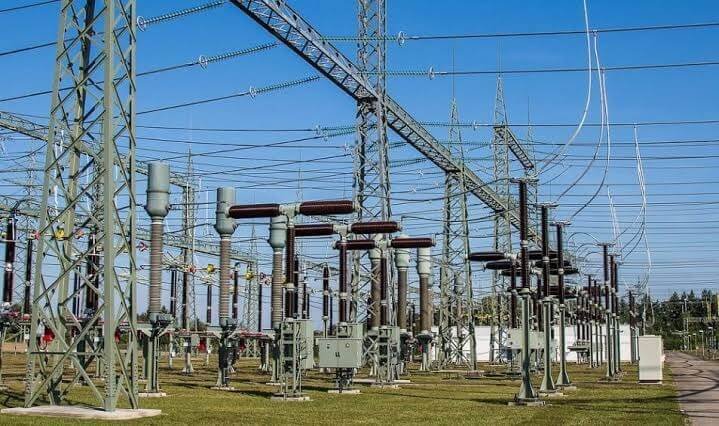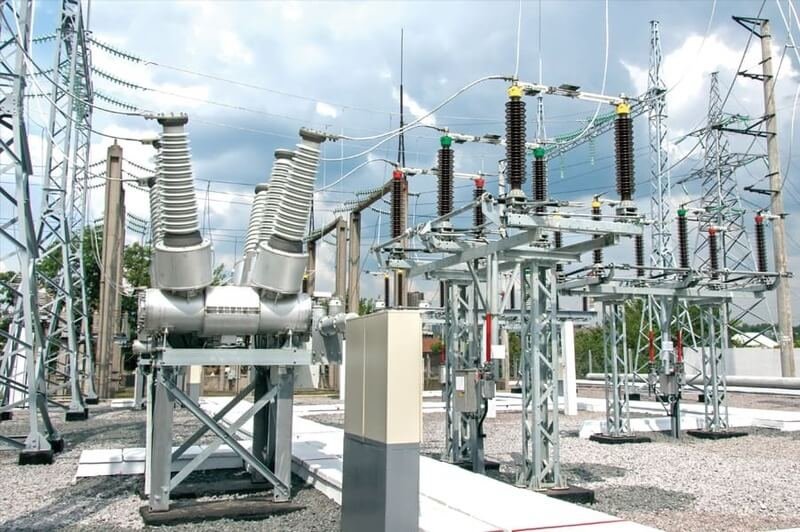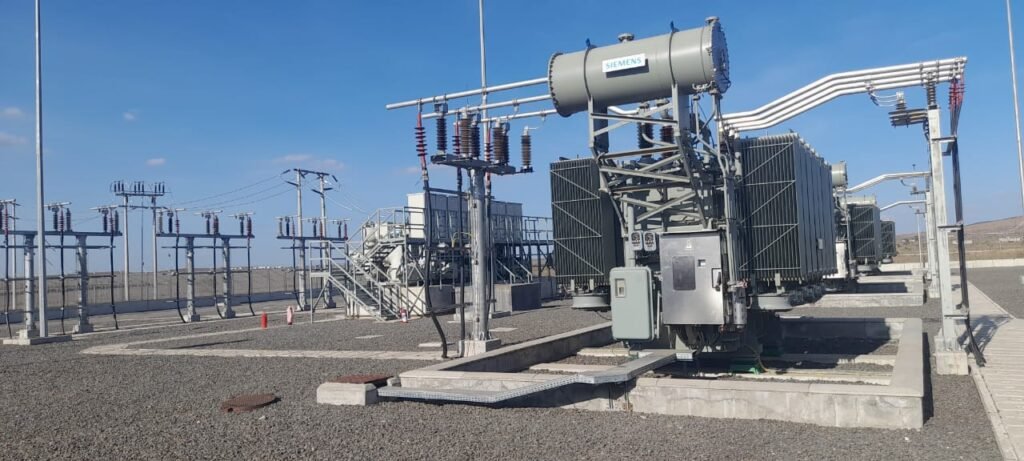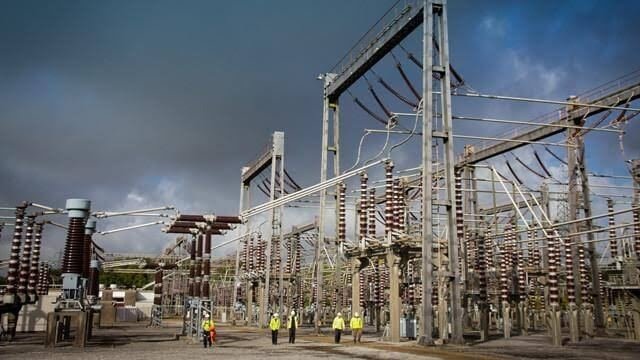An electrical substation is the backbone of modern power distribution systems, serving as critical nodes where electricity undergoes transformation, switching, and control before reaching end users. These complex plants work as control centres in the electrical grid, which coordinate the movement of power resources in generation sources to the industrial, commercial and residential users. This knowledge gives an idea of one of the most complex and important infrastructures of engineering and its intricate functioning.
Modern power systems require strong infrastructure that has the ability for supporting different voltage levels, loading requirements, and grid stability needs. Electric substations have the necessary equipment and control systems that meet this requirement and ensure reliable power delivery. Electric substations ensure power delivery to various places with different power needs, including transmission plants that operate hundreds of kilovolts or tiny distribution stations which supply local residential areas.
The Fundamental Role of Substations in Power Systems

The question of how do electric substations work starts with the main functions that they play in an electrical grid. Substations play several very important roles, including voltage transformation, circuit protection, power quality and system monitoring. These plants serve as strategic control stations where electrical engineers may monitor, control and redirect the flow of power according to the demand patterns and the conditions of the system.
Voltage transformation is probably the most apparent substation role. Electrical power produced at generating stations is usually at quite low voltages, however, when long distances are required to deliver the power, it must be transmitted at high voltages to reduce the loss. Substations increase electricity voltages to be transmitted and then reduce voltages so that they are safe to end users. The method entails advanced transformer technology that can distribute immense power loads at the same time ensuring stability of the system.
Circuit protection functions provide system reliability, isolating faulted sections and avoiding cascading failures that may impact large areas of the grid. Advanced protection systems are based on digital relays, communication and automated switching equipment and are able to detect abnormal conditions and act in milliseconds. This quick response system averts damage of equipment and preserves power of the consumers.
The possibility of system monitoring and control enables the operators to monitor the real-time situations on the network. State of the art substations integrate advanced SCADA (Supervisory Control and Data Acquisition) which gives detailed visibility into voltages, currents, equipment conditions, and environment. This data allows for proactive maintenance and efficient system functionality.
Essential Components That Make Substations Function
To best answer the question on how does a power substation work, the most important devices that facilitate such intricate workings need to be discussed. In most substations, power transformers are at the core of the facility, applying the principles of electromagnetic induction to increase or decrease the voltage and still efficiently preserve the flow of power. Such large machines have complex windings, cooling systems and protection equipment that are expected to last decades.
Switchgear assemblies offer methods of control and protection of the electrical circuits in the substation. High-voltage circuit breakers, disconnect switches and related control equipment allow the operators to establish power flow paths and isolate equipment to be maintained or in emergency. Modern switchgear features gas-insulated technology which occupies less space, has high reliability and safety.
Protection and control systems make up the brain of the substation, coordinating all the actions and reacting to the conditions of the system. Digital relay technology has transformed the protection schemes to present faster response, improved coordination, and improved diagnostic capability. These systems interact with grid operators via advanced communication networks, allowing remote monitoring and control.
Instrument transformers give precise measurement of high-voltage and high-current parameters used to measure protection and metering. Current transformers and potential transformers reduce dangerous amounts of electricity to safe levels that can be handled by protective relays and monitoring devices. System protection and power quality are directly influenced by the accuracy and reliability of these devices.

Substation Types and Their Specialized Functions
Different applications require specialized substation designs tailored to specific operational requirements. Transmission substations operate at the highest voltage levels, typically ranging from 69kV to 500kV or higher. These facilities interconnect major transmission lines and provide voltage transformation between different transmission levels. Their robust construction and redundant systems ensure minimal interruption to bulk power transfer.
Distribution substations serve local areas by transforming transmission-level voltages down to distribution levels, typically 4kV to 35kV. These smaller facilities include automatic voltage regulation equipment to maintain consistent voltage levels for end users. Many distribution substations operate unmanned, relying on remote monitoring and automated systems for normal operation.
Industrial substations cater to large manufacturing facilities, mining operations, and other high-power consumers. These installations often include specialized equipment such as rectifiers for DC processes, large motor starting equipment, and power factor correction systems. The design of industrial substations must accommodate the specific needs of the facility while maintaining grid compatibility.
Collector substations play crucial roles in renewable energy installations, gathering power from multiple generation sources and transforming it for transmission to the broader grid. Wind farms and solar installations rely on these facilities to consolidate and condition their output before injection into the transmission system.
Advanced Technologies Shaping Modern Substation Operations
How do electrical substations work in today’s environment involves increasingly sophisticated technologies that enhance efficiency, reliability, and grid integration. Smart grid technologies enable two-way communication between substations and grid control centers, facilitating real-time optimization of power flow and rapid response to changing conditions. These capabilities support the integration of renewable energy sources and demand response programs.
Digital substations represent the latest evolution in substation technology, replacing traditional analog systems with digital communication protocols and integrated control systems. IEC 61850 communication standards enable seamless integration of protection, control, and monitoring functions while reducing installation complexity and improving system flexibility.
Condition monitoring systems continuously assess the health of critical substation equipment, enabling predictive maintenance strategies that reduce downtime and extend equipment life. These systems monitor parameters such as transformer oil quality, partial discharge activity, and mechanical component wear to identify potential problems before they cause failures.
Energy storage integration is becoming increasingly common in modern substations as utilities seek to improve grid stability and accommodate renewable energy variability. Battery energy storage systems (BESS) can provide rapid response to frequency disturbances, voltage support, and peak shaving capabilities when integrated into substation designs.
Automation and Control Systems in Modern Substations
The sophistication of electricity substations has increased dramatically with the implementation of advanced automation and control systems. Modern substations utilize distributed control architectures that provide redundancy and improve system reliability. These systems coordinate protection, control, and monitoring functions while maintaining the ability to operate autonomously during communication outages.
Automatic transfer schemes enable substations to respond rapidly to system disturbances by reconfiguring power flow paths and maintaining service to critical loads. These schemes utilize sophisticated algorithms that consider system conditions, load priorities, and equipment capabilities to make optimal switching decisions within seconds.
Load dispatch and economic optimization functions help utilities manage power flow efficiently while minimizing operational costs. These systems consider factors such as transmission losses, generation costs, and system constraints to determine optimal power flow patterns throughout the network.
Cybersecurity has become increasingly important as substations become more connected and digitized. Modern installations incorporate multiple layers of security measures including firewalls, encryption, access controls, and intrusion detection systems to protect critical infrastructure from cyber threats.

Grid Integration and Power Quality Management
Substation power distribution involves complex interactions between generation sources, transmission networks, and load centers that require sophisticated coordination and control. Modern substations play crucial roles in maintaining power quality by regulating voltage, managing reactive power, and filtering harmonic distortions that can affect sensitive equipment.
Voltage regulation equipment such as load tap changing transformers, voltage regulators, and reactive power compensation devices work together to maintain voltage levels within acceptable ranges. These systems respond automatically to changing load conditions and system configurations to ensure consistent power quality for all consumers.
Harmonic filtering becomes increasingly important as more non-linear loads and power electronic devices connect to the grid. Substations may include passive or active filtering equipment to mitigate harmonic distortions that can cause equipment overheating, communication interference, and power quality problems.
Grid stabilization functions help maintain system stability during disturbances by providing rapid response to frequency and voltage variations. Modern substations can contribute to grid stability through their control systems, energy storage integration, and coordination with other grid resources.
Maintenance and Safety Considerations
To ensure the consistent functioning of the electrical substations, it is important to provide complex maintenance programs which take into consideration the state of the equipment and the security needs. Preventive maintenance schedules provide regular inspection, testing and service of critical components so that they can continue to work at the design performance and achieve longer service life.
Substation environments are also exceptionally strict with regard to safety rules because of the high voltages, massive equipment, and complex system of electrical systems. There should be effective arc flash protection, electrical safety procedures, emergency response protocols that should be well designed and updated regularly to safeguard personnel working in such dangerous conditions.
Equipment lifecycle management refers to the timely replacement and the upgrades of the old substation components before they are in the end-of-life stages. This is a task that needs to be coordinated well in order to avoid endless disruptions of service and at the same time maintain the reliability and performance of the system.
The environmental factors involve the handling of transformer oil, SF6 gas and other substances that involve special handling procedures. New substations also include environmental monitoring and containment systems to avoid contamination to make the structures environmentally compliant.
The Future of Substation Technology
The evolution of electrical substations continues as new technologies emerge to address changing grid requirements and operational challenges. Artificial intelligence and machine learning applications promise to enhance predictive maintenance capabilities, optimize operational decisions, and improve overall system performance.
Renewable energy integration drives many current innovations in substation design and operation. As more variable generation sources connect to the grid, substations must provide greater flexibility and faster response capabilities to maintain system stability and power quality.
Grid modernization initiatives are transforming substations from static installations into dynamic grid resources capable of providing multiple services. These enhanced capabilities support grid resilience, enable new market structures, and facilitate the transition to cleaner energy sources.
Advanced materials and manufacturing techniques continue to improve equipment performance while reducing size, weight, and environmental impact. These developments enable more compact substation designs and enhanced reliability in challenging environmental conditions.
Conclusion
The sophisticated operation of electrical substations demonstrates the remarkable engineering achievements that enable modern electrical systems to function reliably and efficiently. Such critical installations transform, regulate and distribute electrical energy in elaborate networks of equipment and control systems that react to varying conditions in milliseconds.
With voltage transformation, circuit protection, advanced automation capabilities and grid integration, substations are the overlap of various engineering fields collaborating to keep one of the most critical services in society running. With increasing flexibility, sustainability, and intelligence of electrical systems, substations will still be at the core of the changes.
IET has more than 75 years of experience in electrical engineering, which is transferred to East Africa as complete power transmission and distribution systems in Kenya, Uganda and Tanzania. With our long-documented successes in large scale substation projects, as well as our depth of MV switchgear, transformers and intelligent control system companies, we are your partner of choice when it comes to your critical electrical infrastructure projects. Reach out to our skilled team now to find out more about how our pioneering solutions can streamline your power distribution needs and boost your business reliability.

Leave a Reply